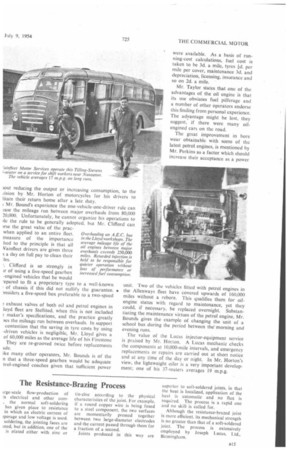The Resistance-Brazing Process
Page 49

If you've noticed an error in this article please click here to report it so we can fix it.
irge-scale flow-production of n electrical and other corn, the normal soft-soldering has given place to resistance in which an electric current of tperage and low voltage is used. soldering, the jointing faces are tned, but in addition, one of the is plated either with zinc or tin-zinc according to the physical characteristics of the joint. For example, if a round copper wire is being fused to a steel component, the two surfaces are momentarily pressed together between two large-diameter electrodes and the current passed through them for a fraction of a second.
' Joints produced in this way are
superior to soft-soldered joints, in that the heat is localized, application of the heat is automatic and no flux is required. The process is a rapid one and no skill is called for.
Although the resistance-brazed joint is more efficient, its mechanical strength is no greater than that of a soft-soldered joint. The process is extensively employed by Joseph Lucas, Ltd., Birmingham.




























































































